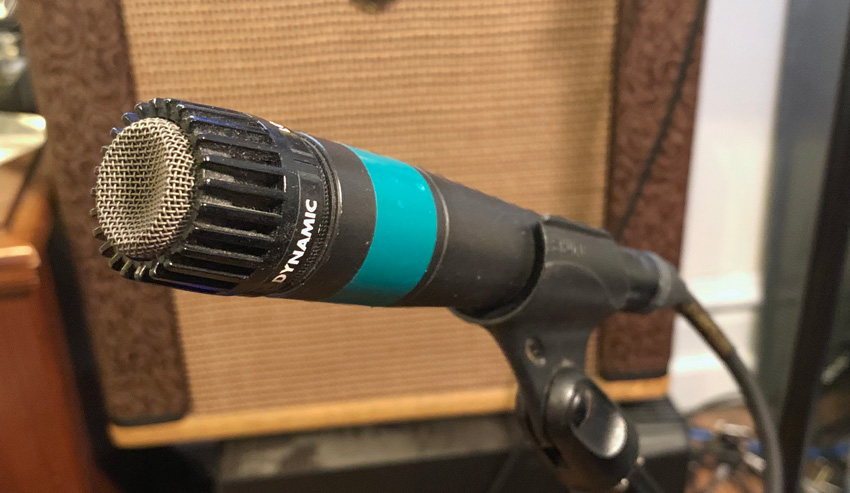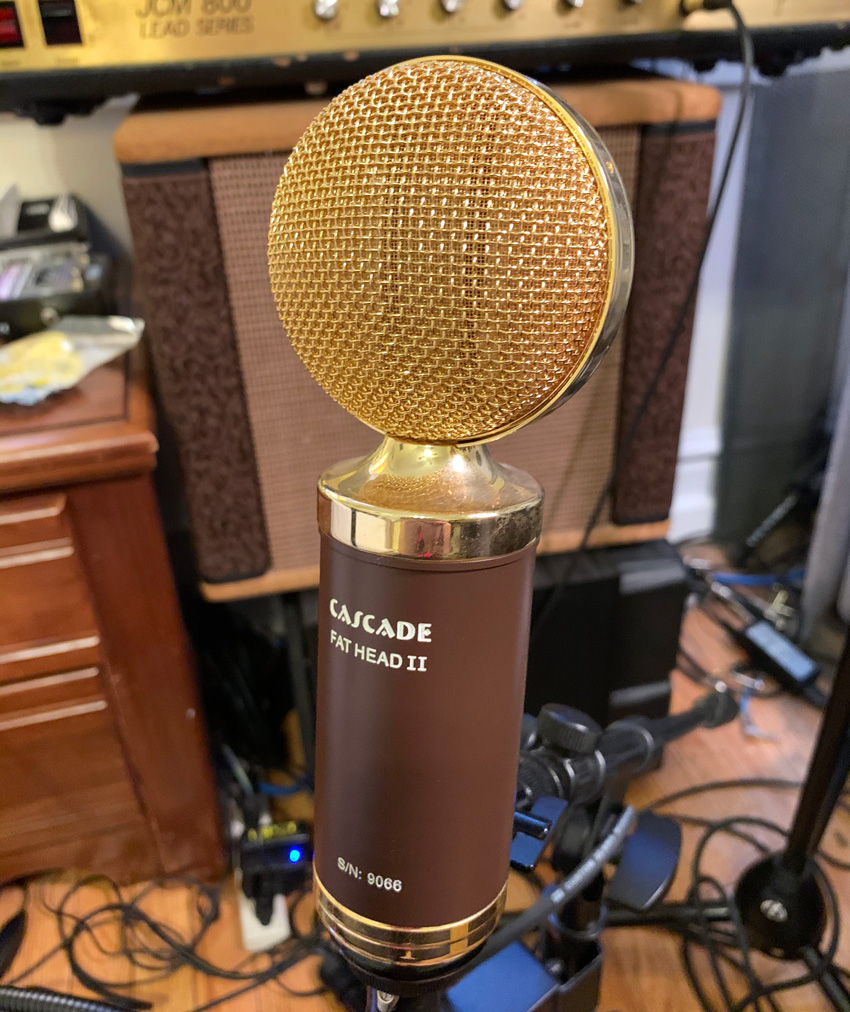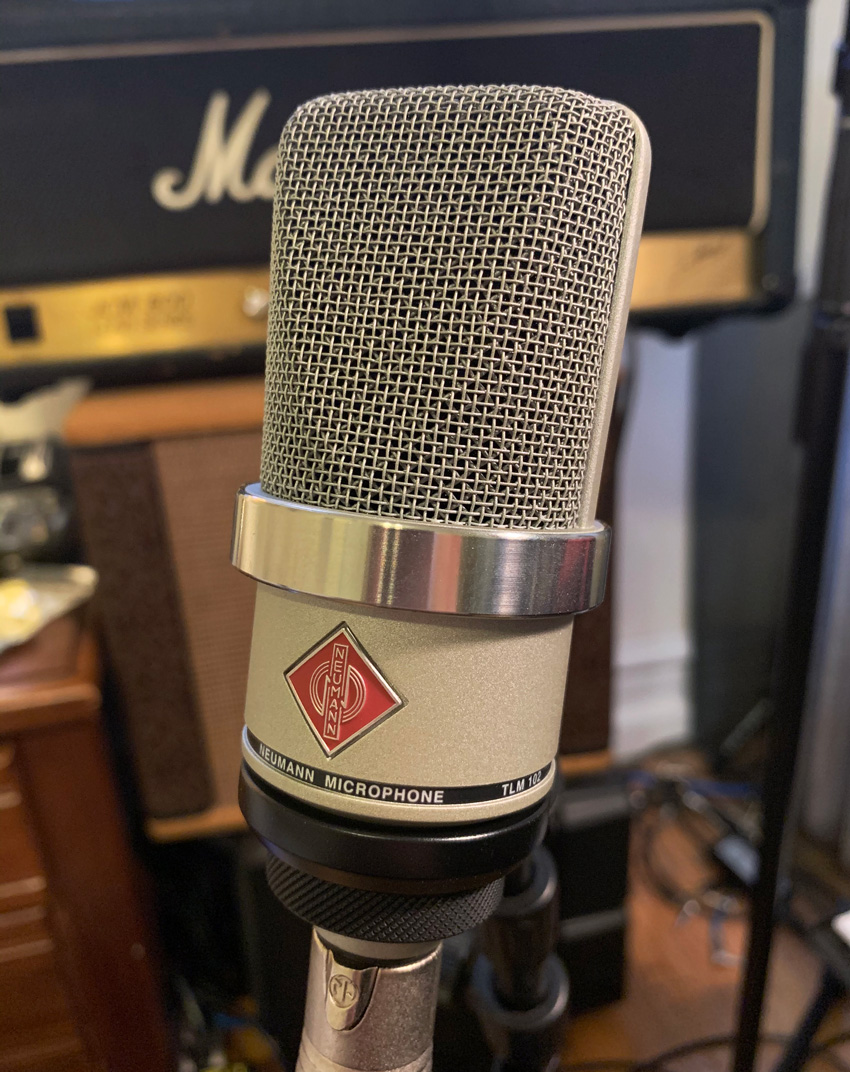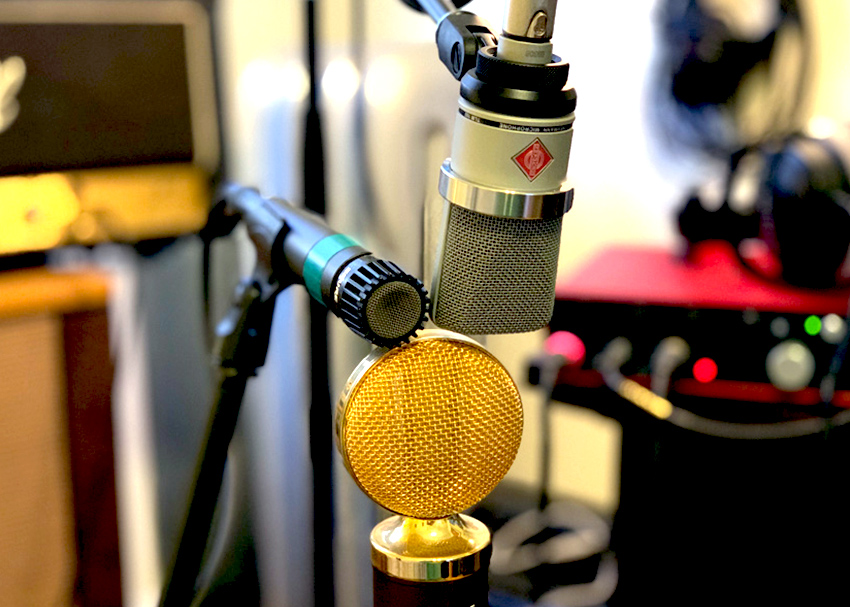Similar to how an artist’s choice in brushes can widely affect the textures in a painting, different microphone types have the ability to also affect the textures of your recordings in various ways. While there are countless brands and models of microphones, I’d like to focus on three main types used to record music: dynamic, ribbon, and condenser. The differences between these types of mics lie in how each captures sound. One type isn’t necessarily “better” or “worse” than the others; they simply exhibit different sound characteristics. And once you become familiar with these differences, you can take advantage of them to great stylistic and/or practical effect.
Read on for a quick synopsis about how each type of microphone works, and then take a listen to the audio samples for some real-world examples of these mics in action. All microphones were plugged directly into a Focusrite 18i8 interface and recorded straight into Logic. No compression or EQ was used for these samples, but I did use Logic’s Gain plugin to bring everything up to the same relative volume.
A few notes about the audio samples. All samples were recorded in an untreated room to mimic practical application of the mics in a project studio setting. The vocals were recorded with each mic around five inches away from my mouth, and I used a Golden Age metal pop filter to keep my plosives in check. The acoustic guitar used was a Gibson Hummingbird Studio Rosewood, with the mics around 12 inches away from 12th fret and pointed to the soundhole. Finally, I included samples of a Latin Percussion egg shaker mainly to highlight how each mic handles sharp transients.
Dynamic Microphones
The least complicated design of the three mic types, dynamics are also known as “moving coil” microphones. The diaphragm of these mics is connected to a coil of wire, and this coil surrounds a magnet. When sound moves the diaphragm, the coil also moves, hence the “moving coil” nickname. This back-and-forth movement disturbs the magnetic field which then creates a tiny amount of electrical voltage. From there, wires connected to the magnet are fed to the mic’s output jack, and there you go, sound waves have been converted to electricity.

Due to their rugged nature and simplistic design, dynamic microphones can take a beating. Because of this, they are the preferred mic for many live applications. Even in the studio, dynamic mics are known for their ability to handle insanely loud sources like guitar amps and drums.
To represent dynamic mics in the audio samples, I chose the ubiquitous Shure SM57. Seen everywhere — from the smallest bedroom studios to the largest stages — this dynamic microphone’s impenetrable durability, well-rounded sound, and affordable price make it a popular choice worldwide.
Ribbon Microphones
Comparable in design to dynamic mics, ribbon microphones also use electromagnets to convert sound waves to electricity, but with a few small differences. Typically, ribbon mics employ the use of a very thin strip of aluminum foil as a diaphragm. This foil ribbon is then suspended between two magnets. As the ribbon vibrates from sound waves, it moves within the magnetic field and generates an electrical signal.

The thin foil ribbon found in this type of mic is flat, with two sides. As a result, ribbon mics inherently exhibit a figure-8 pickup pattern, meaning that they will capture sounds from both the front and rear, but reject those coming from the sides.
Ribbon microphones also tend to exhibit a lower output than other types of mics. Pairing these mics with high-gain preamps or line-boosters like the Cloudlifter will help avoid noise issues that could result from cranking the gain on standard mic preamps. These microphones also tend to exhibit a notable high-end roll-off, suiting them as excellent tools to use on sources with excessive highs that need taming.
For the ribbon mic audio samples, I used a Cascade Fat Head II. This heavy mic features a huge grille that encloses the ribbon and magnets, hence the name. This silky-smooth mic has a robust low end, and easily handles louder sources like guitar amps and drum overheads.
Condenser Microphones
Different from both dynamic and ribbon mics, condensers eschew magnets for pure electric power. In the simplest terms, the diaphragm of a condenser mic is treated with an electrically conductive material, typically gold. The diaphragm is then mounted extremely close to a metal plate. As sound waves move the diaphragm, the distance between the diaphragm and the plate changes, creating an electrical signal.

The raw signal created by a condenser is very weak, however, and needs a boost in order to come up to a usable level. As a result, all condenser mics need some sort of power supply to give the signal a boost. The 48 volt phantom power switch found on most interfaces and preamps these days supply all the power a condenser microphone needs in order to work properly. There are also condenser microphones that use tubes to boost the signal, but those models usually require their own independent, external power supply unique to that mic.
In the audio samples for the condenser mic, I used a Neumann TLM102. This affordable Neumann model offers the crisp, detailed sound that people love about condenser mics. Perfect for vocals, drums, and a variety of instruments, a well-rounded condenser microphone like the TLM102 is an essential addition to any mic collection.




Leave a Reply